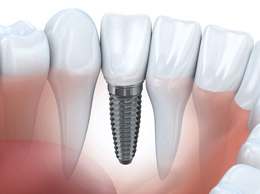Tooth Color Crown & Bridge

Dental Crowns And Bridges are one of the very common dental treatment procedures performed in our clinic. This treatment done either to restore a tooth or teeth in its fully functional form or you can say back to full chewing function or to change the shape ,size and shade of the teeth Or else it is done to replace one or more missing teeth in the mouth.
What is a Crown?

A Dental Crown or Cap , is a restoration which covers the entire outer surface of the teeth which are weakened by decay, severely damaged, chipped or discoloured. They are also required on tooth which are undergone root canal therapy to protect them from the fracture. The tooth is shaped to support the crown. They are made in shape and size similar to your natural tooth.
Different types of crowns :
1. Anterior complete crown/Ceramic crowns: it can be of ceramic, zirconia or emax. Advantages of this materials are, they are highly aesthetics and high strength material. They resist plaque accumulation.
2. Metal ceramic crowns : this type of crown contains both ceramic as well as metal material. They can be used for posterior teeth . Advantages of this type material are high strength and Aesthetic. Adequate tooth reduction can be done so that tooth strength can be maintain.
3. Other types of crowns. Various crowns like, Cast metal crowns with acrylic or composite facings and reinforced crowns are also used
4. Metal crowns: This are the crowns made up of metal, this can be used where crown structure is less. And it can be used for posterior teeth. In this type of crowns less tooth preparation is required and they have greater retention and resistance.
TYPES OF DENTAL CROWNS
- Porcelain
- Ceramic
- Zirconia
- Metal
- Composite Resin
- A Combination Of Materials

Why do Teeth Need Crown
What is a Bridge?
A dental bridge is used for replacing single or multiple missing teeth by taking the support of adjacent healthy and functioning teeth. It is also called as Fixed Partial Denture.The adjacent teeth, called retainers, are covered by the bridge in exactly the same manner as a crown covers a single tooth.
The difference is that the bridge connects the crowns to a pontic (fake tooth replacement) in the missing tooth space.
In the case of one missing tooth, a bridge would be three units: one unit for each adjacent retainer tooth, and one for the pontic. Bridges can be made from all of the same materials listed above for crowns.
What are the Benefits of a Bridge?-
PROCEDURE:
Placing a permanent dental crown typically takes 2 dental office visits.
First visit:-
Your dentist will anesthetize (numb) the tooth and surrounding gum tissue and then shape the biting surface and sides of the tooth. Impression of the prepared tooth and jaw as well as the opposite jaw is taken. If the tooth is very decayed or otherwise too small to hold the crown, the dentist may "build up" the tooth to hold the crown. The dentist will also determine the shade of porcelain to match the surrounding teeth. During this 1st office visit the dentist will make a temporary crown to cover the prepared tooth until the permanent one is ready. The temporary crown is held in place using temporary cement.
First visit:-
Your dentist will remove the temporary crown and check the fit and colour of the permanent crown. If everything is correct, then the dentist will fix the permanent crown with cement.
POST TREATMENT CARE:
While a crowned tooth does not require any special care, remember that simply because a tooth is crowned does not mean the tooth is protected from decay or gum disease.
Therefore:-
Maintain your oral hygiene by regular brushing twice a day,
flossing daily especially around the crown area where the gum meets the tooth.
Rinsing with an antibacterial mouthwash at least once a day.
Rinsing with an antibacterial mouthwash at least once a day.
See your dentist on a regular basis

What are Alternatives to a Bridge?
1. A bridge’s purpose is to replace one or more missing teeth. There are two other general options for replacing teeth. One is a removable partial denture, which as its name implies is taken in and out. It is not cemented to the teeth. A removable partial denture rests on adjacent teeth and uses either a metal or plastic base to hold fake teeth in place.
2. The other tooth replacement option is a Dental implant. A dental implant is the most advanced treatment procedure for the tooth replacement, and it gives the most natural result because it is anchored in the jawbone and does not depend on or affect the adjacent teeth.
